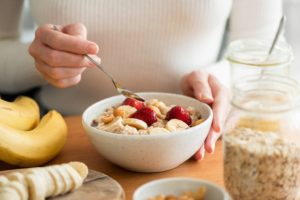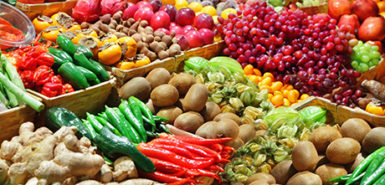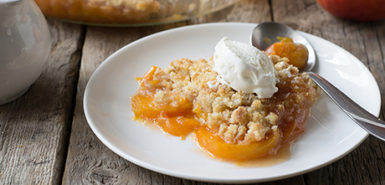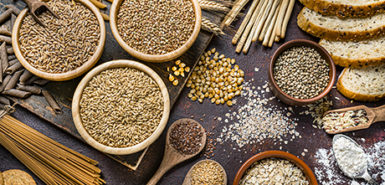
We’ve all heard it before—breakfast is the most important meal of the day.
And yet, about 20% to 30% of Americans do not eat breakfast, due in part to busy schedules, varied appetites or, in some cases, people experimenting with intermittent fasting.
How important is breakfast really—and what’s best to add to the menu?
Need a breakfast makeover?
Those who regularly skip breakfast may face an increased risk of various health problems, including weight gain, diabetes, higher blood sugar, high blood pressure and heart disease.
Hunger, snacking and late-night cravings also increase when skipping breakfast.
This happens because metabolism links to our sleep cycle. Our body’s metabolism operates more efficiently in the morning. Late diners increase their risk of heart disease, diabetes and weight gain—despite watching calories.
Late-night eating can reduce hunger the next the morning.
When planning meal timing or intermittent fasting, avoid eating after dinner. This will allow a 12-hour fast and help you focus on a healthy meal option in the morning.
The second morning fail: The standard American breakfast is nutrient-poor and typically sugar-laden and overly processed.
Let’s face it, doughnuts and pastries—including Pop Tarts and Toaster Strudels—may as well be cake and cookies on your breakfast plate. These leave us feeling sluggish, tired, hungry and craving more through the day.
Instead, focus on foods with high fiber and some protein to keep you full.
And watch the added sugar, including sugar in morning beverages. (Coffee creamer, anyone?)
So does it sound like your breakfast needs a makeover? Here are some additional morning meal swaps to boost your nutrition.
Granola vs. cereal
Breakfast cereals are overly processed and loaded with sugars—and they don’t provide much satiety to get you through the morning.
Try homemade granola or muesli instead for a quick, easy option with more fiber and filling power.
Overnight vs. instant
We try to do our bodies good by eating oatmeal. But many flavored instant oatmeal packets are high in added sugars.
Make your own from plain rolled oats or quick oats and add fruits, nuts or cinnamon for flavor. For a faster option in the morning, prep overnight oats the day before to grab and go in the morning.
Whole grain vs. white flour
Standard pancake and waffle products are made from white flours. They lack fiber but they’re plentiful on added sugars—and that’s before the syrup is poured.
Make your own options using fiber-rich whole grains like oats. Prep large batches to freeze for a quick breakfast later, or look for whole grain frozen options such as Kashi for convenience. Use fruits, yogurt and a touch of pure maple syrup to top your flapjacks for less added sugar.
Make-at-home vs. drive-thru
Frozen breakfast sandwiches and fast-food breakfast sandwiches contain high fat and hardly any fiber.
Build your own sandwich at home with whole grain English muffins, leaner Canadian bacon and cooked eggs. Bonus for adding avocado. Make ahead and freeze for busier mornings.
Fruit vs. sugar
Whether homemade or on the go, yogurt parfaits often contain a lot of sugar.
Make your own option with plain Greek yogurt, fresh fruit, a drizzle of honey and nuts or granola.
High-fiber bars vs. Pop Tarts
Pop Tarts and many breakfast and granola bars are often loaded with sugar. These grab-and-go favorites can get you off to a rough start in the morning.
Look for bars with at least 3 grams of fiber—and preferably more fiber than sugar on the Nutrition Facts label. You can also make your own granola bars for a quick option in the morning.
 /a>
/a>
 /a>
/a>
 /a>
/a>
The old fashion oatmeal with fruit is a favorite but to make it more nutrient-dense for some of my health challenges, I specifically add either blueberries or toss in dried Montmorency cherries and then either walnuts or pecans. It make a meal for me and not always the first of a day. It ‘holds’ me for a comfortable span of time; how long depends on activity but never less than 3 hours.
I add those items too but also add apples, walnuts and cinnamon.